Guinea Bissau J5T
J 5 T … another adventure of the Italian Dxpedition Team
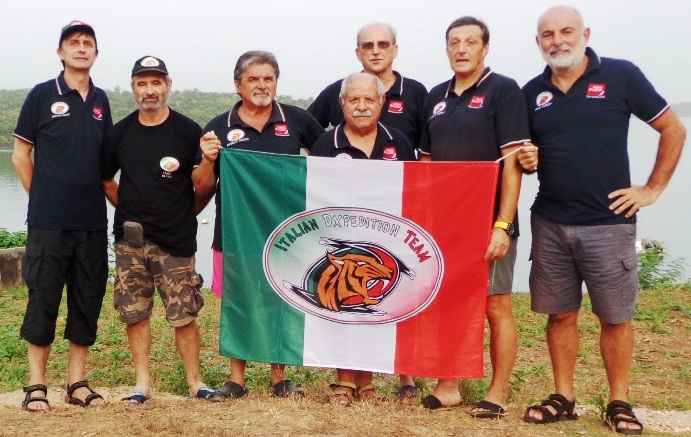
Back home since just a few days, all Team members have resumed their normal occupations: some at work, some enjoying their retirement, others already pasting labels on QSL cards and preparing envelopes for mailing. Everything as usual at the end of our Dxpeditions. Likewise, I find myself in front of my PC with the notes taken during the last 15 days, to tell you about the events in Guinea Bissau in November 2017.
It was the 11th of April 2016 when, after consulting with Silvano, I began corresponding with friends of the Verona DX Team. We had been considering to activate Guinea Bissau since some time, ad after researching the web, we discovered that some Italians had been in that country years before. Our friends from Verona, in particular Lucio I3LDP and Libero IK3RBE, offered their help for licencing and organising local logistics with the assistance of Father Gianfranco Gottardi J59OFM, who operates a humanitarian mission in Camura, near the Capital city Bissau. The website of Father Gianfranco, www.padregianfranco.org, is an excellent source of information on his activities and provides references for sending help to the mission.
In August 2016 Father Gianfranco came to Italy, which gave us the opportunity to meet him and to deliver the whole documentation for the licensing process. We were expecting simple steps and quick formalities, which led us to announce the Dxpedition for November of the same year. We did not take into account the then forthcoming political elections: as it is customary in many African countries, they imply a complete jam of the government offices for months, up to the final results. Skipping countless e-mail messages with Father Gianfranco and Libero IK3RBE, I can report that our licence arrived as an Easter egg on 12 April 2017, exactly one year after the initial contacts with our friends from Verona.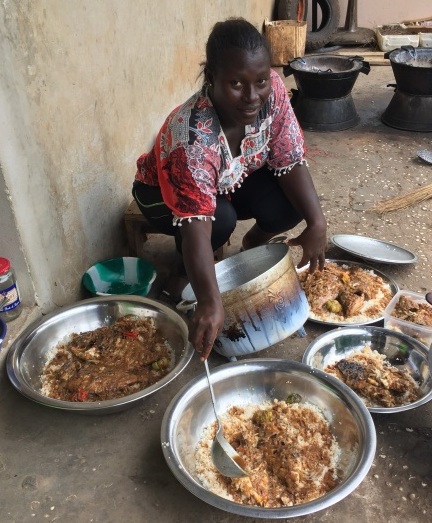
We initiated immediatly a search for a suitable location on the island of Bubaque, which we found at the Kasa Africana Hotel, a fishing club managed by a frenchman who was aware of our needs having hosted another group of radio amateurs years before.
We settled on the price of transportation, boarding, generator, internet connections and security, but we had to accept a time window suitable for the hotel, which is rather small and almost completely booked by European sport fishermen. At this point Arturo IK7JWY, our pilot station, notifies the worldwide amateur community of our final plans for the period 13-26 November 2017.
This time our good friend Mac JA3USA cannot join the team because of family commitments. Nevertheless, he will be a constant presence throughout the Dxpedition with advice on the optimal time windows and frequencies for the narrow openings to Japan and the Far East.
Prior to each Dxpedition, we test carefully our equipment. For 48 hours we simulate the whole computer and server network including packet cluster, we carry out QSOs in RTTY, SSB and CW exercising our real-time online log system. We test all cables, all antennas and we prepare an anlytical list of all equipment and parts stored in the various boxes. This time we added to our normal set of radios 2 amplifiers by Italab, an Italian firm producing since years solid-state amplifiers for broadcasting which has recently expanded its product line with amateur HF amplifiers.
After packing all equipment (with Silvano in charge) we reach 15 boxes full to the utmost limit. We then prepare the custom papers and translate them into English, French and Portuguese, the latter being the most common language in Guinea Bissau as a former Portuguese
colony.
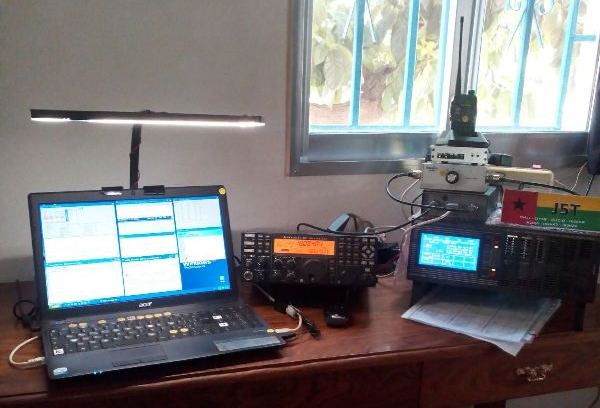
As most of you know, the worst steps for a Dxpedition are licencing and customs. The first one was fine, but the second raised some anxieties. We knew that our friends of the MDXC active in 9U had been delayed by days owing to customs processing. Since it happened to them, why not to us? Nothing is simple in Africa, and after years of experience we are well aware of that.
Departure from Malpensa on the 12th, stopovers in Casablanca and Capo Verde, we then arrive at Bissau airport at 3:30 am on the 13th. Thanks to the accurate paperwork we get through customs in 30 minutes and, after a short strech by car, we board with our equipment a speedboat to the island of Bubaque in the African night. We are somewhat worried by having to navigate the Atlantic ocean without radar, but after 2 hours we arrive safely at our destination. At sunrise we are already busy.
Everything had been tested carefully, but Mr. Murphy hits once again. The first station, on RTTY, has a problem from the start: for reasons not understood yet, the PC/radio interface refuses to work.
After a full hour of attepts I give up and, to speed up preparations, I swap the interface with that of the SSB station, which is compatible with RTTY. All our stations are compatible and fully interchangeable, so that swapping components is a breeze. In the meantime the CW station initiates to operate, while for the SSB station we try to make use of the recalcitrant interface just for the CAT part: it works. We then launch the well-tested online log by IH9GPI, but the firewall of our internet provider occasionally blocks some packets sent to our server in Italy. A call to Giacomo IH9GPI solves the problem: we cannot update each minute, we must update our log each 3 to 4 minutes. Not a big issue, even if some correspondents warn us of this delay. Did we pamper them too much over the years?
After the initial excitement, all goes well (for the moment) and we raise good pileups. The higher bands are not so productive, whereas the lower ones display a high level of activity (as implied by the current status of the propagation cycle).
However, as we reported many times, in Africa nothing should be taken for granted. In spite of being authorized to raise our antennas on the island, on the second morning we are visited by the local police ordering us to remove them. This is because the island governor, a supporter of the President of Guinea Bissau who is spending a few days in a neighbouring hotel, had not been informed of our activity. Gino IK2RPZ clarifies that the incident arised from a lack of communication by the Central Ministry, and is not our fault. After a few hours of discussions and a corresponding pause in our activity, all is clear and with relief we are allowed to continue handling the pileups.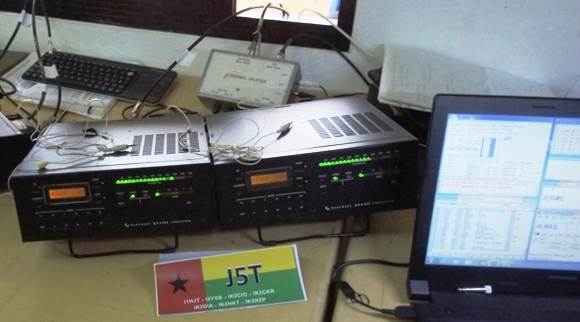
Yet other problems are lurking, and quite a number of them. First of all the line voltage which, in spite of all pledges, drops by tens of volt when loaded by our amplifiers. We remedy this with a second generator (and an unexpected increase in costs). At this point we believe that all stations can work at full power, but on the 4th day the new amplifiers display, almost simultaneously, the same problem: the antenna relays, recently upgraded in Italab, fail to perform to specs and we have to rely on occasional blows to the cabinets to make them switch. We inform Nico, the owner of Italab, who offers to ship, immediately by express courier at his own expenses, a set of new and more performant replacements. Probably he has not fully realized where we are: the parcel would have never reached us in time. We opt for a sketchy solution by forcing the relay case with two toothbrushes with the aim of improving contacts….a solution which works for just a few hours, but ultimately fails to a sad silence. The relays fail definitely and we are left with just the 500W amplifiers.
Since we have a combiner which allows to merge the output two amplifiers obtaining 1kW, we decide to operate the CW station during the night with 1kW and the SSB station at 500W output. As for the RTTY station the power will be the barefoot 100W.
In the meantime, the computer for RTTY quits generating series of errors. After some checks, and in order to save precious operating time, I decide to re-format the PC memory and reinstall the software: a few hours break to ensure a smooth operation. Also in this case we are unable to identify the cause of the malfunction, since the configuration is the same as for the previous Dxpedition. Anyway, we are gratified by the nice final results of Gino IK2RPZ, with 3163 RTTY QSOs logged on the 20m band.
This year, we chose a different strategy for coping with duplicate contacts. Up to the last Dxpedition we worked everybody, irrespective of dupes; this time we minimized the number of dupes informing the correspondent that duplicate QSO would not be logged. By so doing, we reduced the number of dupes to a reasonable 1500; at any rate we fail to understand why somebody tries to work us 3 or even 4 times on the same band/mode. To this end, here is a little story: I happened to be considered incompetent in dealing with the pileup (yes, incompetent!) simply because I refused to work an OM (Italian!) requesting to be logged at his third duplicate QSO. Having 17 Dxpeditions and more than 400,000 personal QSOs to my credit, I replied openly that he was nuts (actually with a stronger phrasing).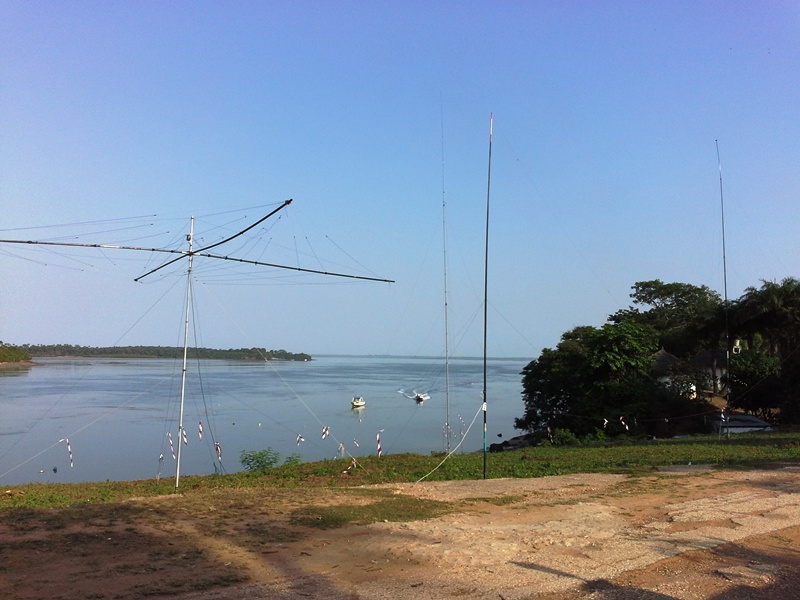
Let us return to the seemingly endless drawbacks of this Dxpedition: we realize that the SSB Spiderbeam developed a high SWR on 12 and 17meters. We disassemble the antenna, replace the balun, check measurements and connections, but to no avail: the antenna does not work. At this point we modify the RTTY 20m Yagi, turning it into a tribander for 12, 17 and 20m. This is a solution, but once again we cannot understand the origin of the malfunction. However, low and behold, on the last two days the antenna reverts by itself to normal operation! When back, Silvano will have a hard time during winter to restore contacts and connections to a working original.
During this Dxpedition the SSB station tested a new type of bow microphones, often used by artists and singers for their performances. At the beginning we spent a few minutes to equalize the audio response; after setting up we could appreciate their performance, small size and ease of use. Next time we shall take with us other models for tests under real conditions, in order to arrive at the final choice of an “Official IDT microphone”. We shall report our findings to the community, given the combined advantages of quality, sturdiness and small profile at a very moderate price. Keep an eye on our website.
Never say “never” in Africa… Another unexpected problem arose from strong interference between the CW and SSB stations, although they were located at quite some distance from each other. After excluding a negative effect of the local grounding system at the resort, we shifted our attention to radios and amplifiers. Given the interchangeability of the components we swapped them, but it did not help. Finally, we had to accept the situation and the SSB station suffered substantially from the CW manipulation when receiving weak signals. As a final measure, in order to maximize the QSO rate, we decided to operate all 3 stations on CW.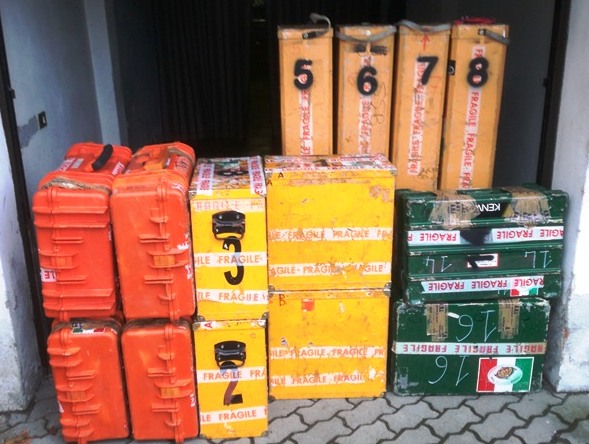 This was the novelty of this Dxpedition: both Gino IK2RZP and myself IK2HKT operating CW for hours a day on a row. Obviously we could not even approach the proficiency in handling pileups of Angelo, Alfeo and Vinicio, but with a little humbleness and intensive use of the F7 key (‘?’) we managed to log a few thousand QSOs. We are sorry for those who had to repeat their calls 2 or 3 times, but we did our very best and, in the end, we even enjoyed it!
This was the novelty of this Dxpedition: both Gino IK2RZP and myself IK2HKT operating CW for hours a day on a row. Obviously we could not even approach the proficiency in handling pileups of Angelo, Alfeo and Vinicio, but with a little humbleness and intensive use of the F7 key (‘?’) we managed to log a few thousand QSOs. We are sorry for those who had to repeat their calls 2 or 3 times, but we did our very best and, in the end, we even enjoyed it!
As is common for all Dxpeditions, time for the official photo. Silvano I2YSB practiced at home with his new drone, shooting images from new views in order to enrich the expedition DVD with special effects. But once again he forgot to take Africa into account … You may not believe it, but parallel to our hotel and next to it there was a landing strip, a dirt one but nevertheless reported on aeronautical charts. As a consequence, the area surrounding it is a no-fly zone. Obviously, Silvano’s drone being a last-generation type, it simply did not work close to a forbidden area. So, months of preparations and planning ended in storing the drone back in its casing, postponing its use to the next Dxpedition. This was really unexpected!
The days go by quickly, and the numbers of contacts on the various bands rise to important values.
The major part is from the low bands, with 160m closing at 2500 QSOs, 80m above 5000 and 40m above 8000, of which half on SSB. Strong signals from both Europe and USA; in the middle of the night West Coast hams were sounding like locals. Some regret for the Japanese: apart from good openings in the morning on 20m long-path, the other bands were not as good, as expected from propagation forecasts.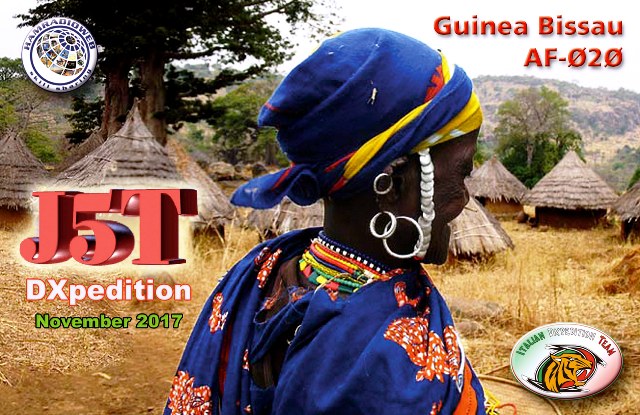
The worst had still to come on the last two nights, with the most regrettable event. Around 4 a.m. Silvano was alone in the SSB/RTTY shack, taking at times a short nap. An unknown person entered through the window and stole, in succession, Stefano’s smartphone on the first night and the two smartphones of Silvano on the second. On the first occurrence Silvano did not notice, while on the second night he was awakened by the thief and ran after him without being able to avoid the loss of his phones. This event was reported to the authorities, having in mind a possible collusion on the part of the guards whom we had paid in advance for our protection. In the end, we could not recover our phones, which contained movies and pictures now irretrievably lost. It was a great pity, also because the local population is warm and nice, everybody greets you with a smile and the atmosphere is very friendly. In no way this unsettling mishap can modify the nice overall impression we got in Guinea Bissau.
Anyway, our morale was restored by Gino who, being a proficient fisher, left the RTTY position and went fishing what would be our last dinner there. Countless and tasty fishes which made us forget that nasty experience. As for myself, being allergic to fish, I had to limit my dinner to a meagre salad with eggs. I shall make up for it at the next Dxpedition!
On the last day we concentrated on disassembling the antennas and equipment. After that, we decided to take some rest on a deserted island at some 30 minutes from Bubaque. There we rested our ears, tried to fish (unsuccessfully), enjoyed the environment and prepared our return trip.
We take off from Bissau on 27 November at 4 a.m.; after a stopover in Casablanca we arrive in Italy at 4 p.m. on the same day. We land at Malpensa airport, tired but happy: 63635 QSOs (of which more than 20,000 uniques) from a country down at the 111th place in the most wanted list, and well into the solar minimum, is quite a success. When comparing this achievement with the result of our last Dxpedition which netted 63155 contacts from the Central African Republic, ranking 93rd among the most wanted countries, we are very satisfied. Maybe the overall ATNOs are not a big number, but at least we are confident that many OMs could finally fill in some missing and long-awaited band/mode contacts.
As usual, information for QSLing on the Dxpedition website at www.i2ysb.com/idt.
See you on our next Dxpedition!
73, Stefano IK2HKT